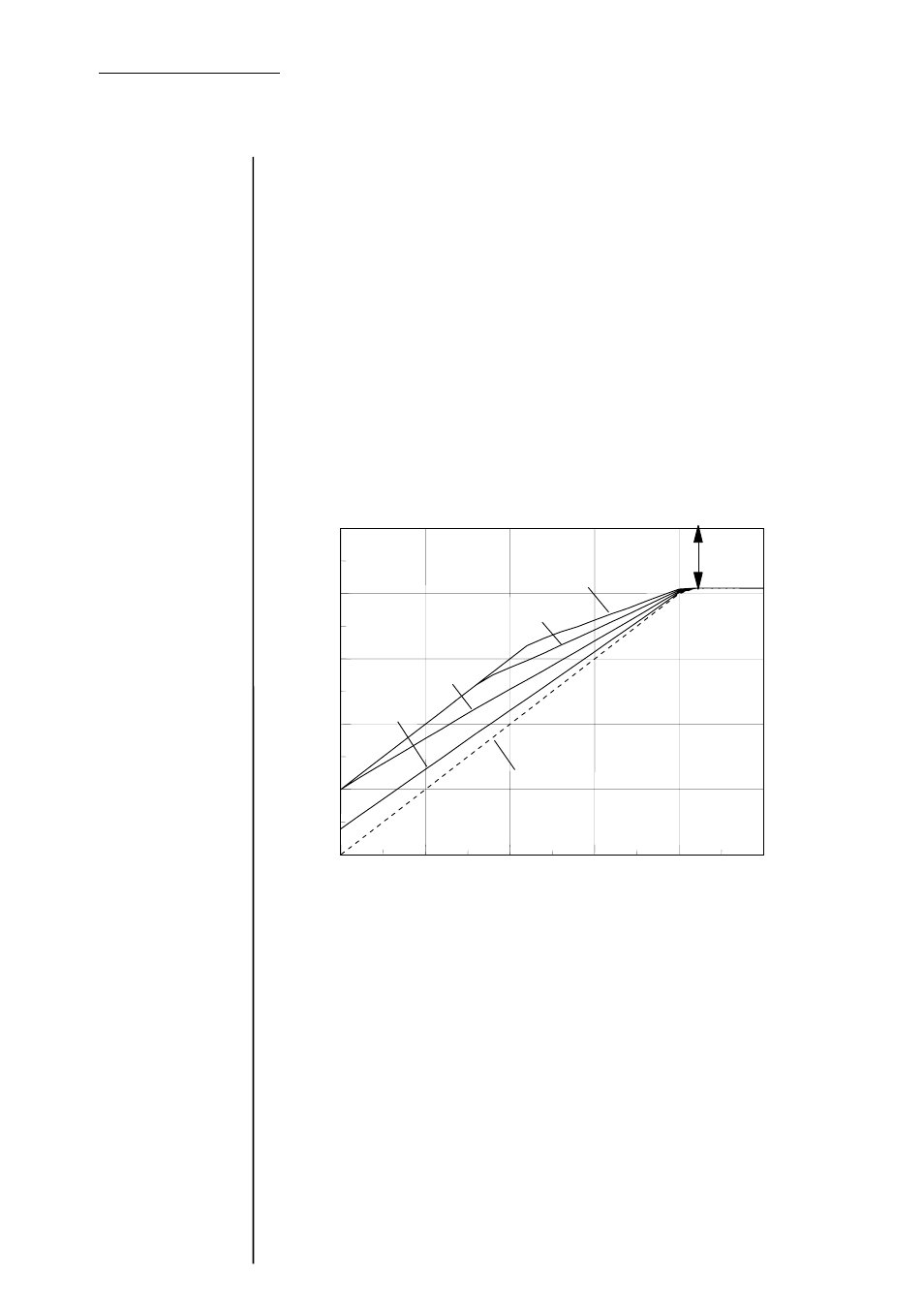Junger Audio d02 - Digital Dynamics Processor User Manual
Page 28

5. APPLICATION NOTES
5-2
5.3.
Working with
headroom
The static characteristics of the d 02 (see also fig. 2) usually refers to
the digital reference level 0 dBFS (dB Full Scale). This is useful for
most applications of the dynamics processor as the on-following
digital recording system is supposed to be balanced down to the final
bit.
For applications using headroom the d 02 can be adjusted to another
reference level of 0 ... -15 dBFS in steps of 1 dB. The limiter threshold
and therefore the maximum output level are determined by this digital
reference level. This value is then also the reference for the expander
and limiter threshold values. The static characteristics for a reference
level of -9 dBFS are illustrated in fig. 5.
The adjustment of the device to this reference level is achieved with
pushing DISPLAY and GAIN buttons at the same time (see also
chapter 2.4. and 3.).
Headroom 9 dB
2.0 : 1
1.6 : 1
1.3 : 1
1.1. : 1
off
static characteristics: compressor
compression gain: max. 10 dB
parameter: ratio
digital reference level: -9 dBFS
-50 -40 -30 -20 -10 0
-50
-40
-30
-20
-10
0
input level (dBFS)
output level d02 (dBFS)
fig. 5:
Static
characteristics:
Compressor/
Limiter with -9dBFS
Digital Reference
Level
5.4.
Influence of signal
delay time
The audio signal delay through the dynamics processor is approx.
2ms due to delaying of the audio signal using internal memory. A
small delay is deliberately introduced to the audio signal in order to
allow limiter and compressor algorithms which can 'preview' the
audio signal before changing it. That is the signal curve can be
changed before maximum level is reached. (For further details see
chapter 1).
This delay must be considered before attempting to mix signals
processed by the dynamics processor with other undelayed signals.
